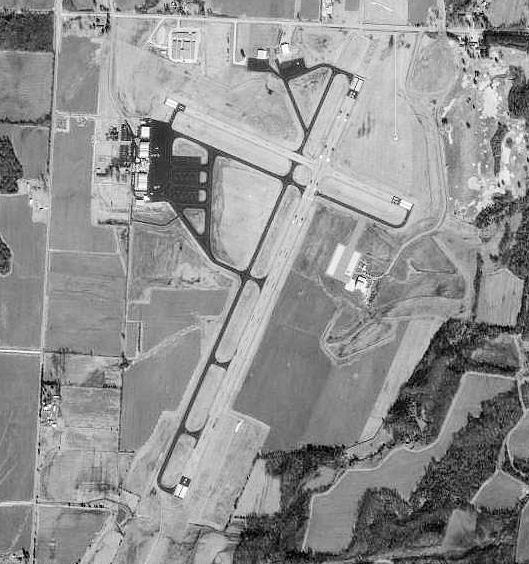Airport type Public Website McKellarSipes.com Elevation 132 m | Elevation AMSL 434 ft / 132 m Code MKL Phone +1 731-423-0995 | |
 | ||
Owner City of Jackson & Madison County Address 308 Grady Montgomery Dr, Jackson, TN 38301, USA Similar Jackson (TN), Greyhound Lines, Jackson County General, Comfort Suites, Drivers Testing Center | ||
McKellar–Sipes Regional Airport (IATA: MKL, ICAO: KMKL, FAA LID: MKL) is a public use airport located four nautical miles (7 km) west of the central business district of Jackson, a city in Madison County, Tennessee, United States. It is owned by the city and county. The airport is mostly used for general aviation, but is also served by one commercial airline, subsidized by the Essential Air Service program. SeaPort Airlines began its services to Memphis and Nashville on January 22, 2012.
Contents
- Facilities and aircraft
- Airlines and destinations
- History
- McKellar Field
- McKellarSipes Regional Airport
- References
As per the Federal Aviation Administration, this airport had 134 passenger boardings (enplanements) in calendar year 2008, 1,502 in 2009, and 2,545 in 2010. The National Plan of Integrated Airport Systems for 2011–2015 categorized it as a general aviation airport based on 2008/2009 enplanements (the commercial service category requires at least 2,500 enplanements per year).
Facilities and aircraft
McKellar–Sipes Regional Airport covers an area of 807 acres (327 ha) at an elevation of 434 feet (132 m) above mean sea level. It has two asphalt paved runways: 2/20 is 6,006 by 150 feet (1,831 x 46 m) and 11/29 is 3,538 by 100 feet (1,078 x 30 m).
For the 12-month period ending March 30, 2011, the airport had 20,322 aircraft operations, an average of 55 per day: 85% general aviation, 10% military, 5% air taxi, and <1% scheduled commercial. At that time 48 aircraft were based at this airport: 50% single-engine, 25% multi-engine, 4% jet, 4% helicopter, and 17% military.
Airlines and destinations
The following airline offers scheduled passenger service:
History
The airport was established by and originally named in memory of Kenneth Douglas McKellar (1869–1957), a U.S. senator from Tennessee. He helped to convince the Civil Works Administration to acquire the property and construct the initial runways and buildings during the winter of 1933-1934. Later in the 1930s, the Works Project Administration (WPA) expanded the airport and constructed additional buildings and other facilities.
McKellar Field
In preparation for the eventual U.S. entry into World War II, the United States Army Air Corps sought to expand the nation's combat air forces by asking civilian flight schools to provide the primary phase of training for air cadets. Consequently, it contracted with civilian flying schools to provide primary flying training, with the graduates being moved on to basic and advanced training at regular military training airfields.
In April 1942 the airport was leased by the United States Army Air Forces and became a wartime flight training school. McKellar Field was assigned to the Southeast Training Center (later the Eastern Flying Training Command) as a primary (level 1) pilot training airfield. It was under the command of the 68th Flying Training Detachment, 29th Flying Training Wing. The airfield began training flying cadets under contract to Georgia Air Services, Inc. Flying training was performed with PT-17 Stearman biplanes as the primary trainer. It also had several Fairchild PT-19, Ryan PT-22 Recruits and PT-27 Kaydets assigned.
The physical facilities of McKellar Field included administrative buildings and quarters for officers and enlisted men, encircling a central location. A consolidated mess hall, which accommodated 1,000 enlisted men and a limited number of' officers, was located nearby. Adjacent to the mess hall was a Post Exchange, a Service Club and a dance floor.
The facility was inactivated on October 16, 1944 with the drawdown of AAFTC's pilot training program. It was declared surplus and turned over to the Army Corps of Engineers on September 30, 1945. Eventually it was discharged to the War Assets Administration (WAA) and became a civil airport.
McKellar–Sipes Regional Airport
After the war, the airport reverted to the control of the city and county, and was expanded over the years with new facilities to accommodate the needs of Jackson and Madison County. Nearly all of the wartime buildings erected at the airport were torn down or moved, although four of the wartime hangars remain in use at the airport. A few of the streets from McKellar Field remain visible in aerial photography but other than some isolated concrete remaining, the station area has been totally removed.
A military presence remains at the airport, with the Tennessee Army National Guard’s 1/230th Air Cavalry Squadron having an extensive support facility at the airport, equipped with UH-60 Blackhawk helicopters.
In the 1970s, the airport name was changed to McKellar–Sipes Regional Airport to honor Major Robert Ray "Buster" Sipes, a United States Air Force test pilot from Jackson, who was killed in 1969 when his RF-101 Vooodoo jet fighter crashed after takeoff from RAF Upper Heyford, Oxfordshire, England. A plaque is located in the Church of St. Peter & St. Paul at Steeple Aston to honor his memory. Sipes is buried at the Shiloh National Military Park cemetery.
